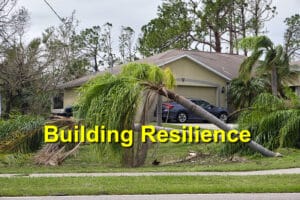Winter brings unique challenges to construction sites—freezing temperatures, shorter daylight hours, slippery surfaces, and unpredictable weather conditions. These factors can increase the risk of accidents and slow project progress if not properly managed. Ensuring worker safety during cold-weather construction is essential for productivity, morale, and overall project success.
Below are key safety measures every contractor and construction team should follow during winter projects.
1. Proper Cold-Weather Gear and Clothing
One of the first lines of defense against the cold is proper personal protective equipment (PPE). Workers exposed to freezing temperatures should wear insulated, water-resistant clothing and multiple layers to trap body heat.
Key guidelines:
- Use thermal inner layers with moisture-wicking fabric.
- Wear insulated gloves and boots with good traction.
- Protect the head, ears, and face using hats or balaclavas.
- Keep spare dry clothing available to change out of wet gear.
Proper attire not only maintains comfort but also helps prevent hypothermia and frostbite—two common cold-related risks.
2. Preventing Slips, Trips, and Falls
Snow, ice, and slush can quickly turn a worksite into a hazard zone. Slips and falls are among the most frequent causes of winter construction injuries.
Safety tips:
- Clear snow and ice from walkways, ladders, and scaffolding before starting work.
- Use salt or sand to increase traction on icy surfaces.
- Ensure workers wear slip-resistant boots.
- Install temporary handrails where needed for extra stability.
Regular inspections throughout the day can help identify and eliminate hazards caused by changing weather conditions.
3. Equipment Maintenance and Inspection
Cold weather affects machinery performance and can lead to equipment failure. Hydraulic systems may thicken, batteries can lose charge faster, and metal components may become brittle.
Best practices:
- Warm up heavy equipment before use to prevent damage.
- Use winter-grade lubricants and fuels.
- Store machinery in covered or heated areas when possible.
- Inspect tools and vehicles daily for cracks or wear caused by the cold.
Proactive maintenance ensures equipment runs smoothly and safely throughout the season.
4. Safe Material Handling
Cold temperatures can affect the properties of construction materials such as concrete, mortar, and steel. Using materials improperly in freezing weather can compromise structural integrity.
Tips for material safety:
- Store temperature-sensitive materials in heated enclosures.
- Use hot water or heated enclosures when mixing concrete.
- Follow manufacturer recommendations for temperature limits.
- Monitor curing times carefully, as cold weather slows chemical reactions.
Proper storage and handling help ensure high-quality results despite harsh conditions.
5. Protecting Workers from Hypothermia and Frostbite
Exposure to cold air, wind, and wet conditions can lead to serious medical emergencies like hypothermia and frostbite. Recognizing the symptoms early is vital.
Watch for signs of hypothermia:
- Shivering, confusion, slurred speech, fatigue.
Watch for signs of frostbite: - Numbness, pale or grayish skin, hard or waxy-looking fingers or toes.
Prevention measures:
- Schedule regular breaks in heated rest areas.
- Provide warm beverages and encourage hydration.
- Rotate workers to limit prolonged exposure to extreme cold.
Training crews to identify and respond quickly to these conditions can save lives.
6. Ensuring Adequate Lighting
Winter days are shorter, meaning less natural light for outdoor work. Poor visibility can increase the risk of accidents, especially around machinery or elevated work areas.
Safety tips:
- Install bright, energy-efficient lighting in key areas.
- Use portable light towers for flexible illumination.
- Keep lights clean and free of frost buildup.
Proper lighting not only improves safety but also boosts efficiency during early morning or late evening shifts.
7. Clear Communication and Safety Training
Winter construction sites require even stronger communication protocols. Workers must understand emergency procedures, weather-related risks, and safety expectations.
Training should include:
- How to recognize cold-related illnesses.
- Safe driving and equipment operation in icy conditions.
- Emergency response and first aid procedures.
Regular safety briefings and toolbox talks help reinforce awareness and preparedness across the team.
8. Planning Around the Weather
Successful winter construction requires flexibility and preparation. Monitoring weather forecasts allows project managers to schedule tasks strategically—avoiding high-risk periods.
Planning tips:
- Reschedule non-urgent outdoor work during storms or extreme cold.
- Keep backup materials and tools in case of weather delays.
- Use weather protection like tents or temporary heating for sensitive tasks.
Good planning reduces downtime and minimizes accidents caused by rushed or unsafe conditions.
Conclusion
Winter construction comes with challenges, but with the right precautions, projects can continue safely and efficiently. From equipping workers properly to maintaining machinery and adjusting schedules, proactive safety measures protect both people and progress.
By prioritizing safety and preparation, contractors not only reduce the risk of injury but also ensure consistent productivity throughout the coldest months of the year.
In construction, every season has its risks—but winter safety is about working smarter, not harder.
References: Aithor




